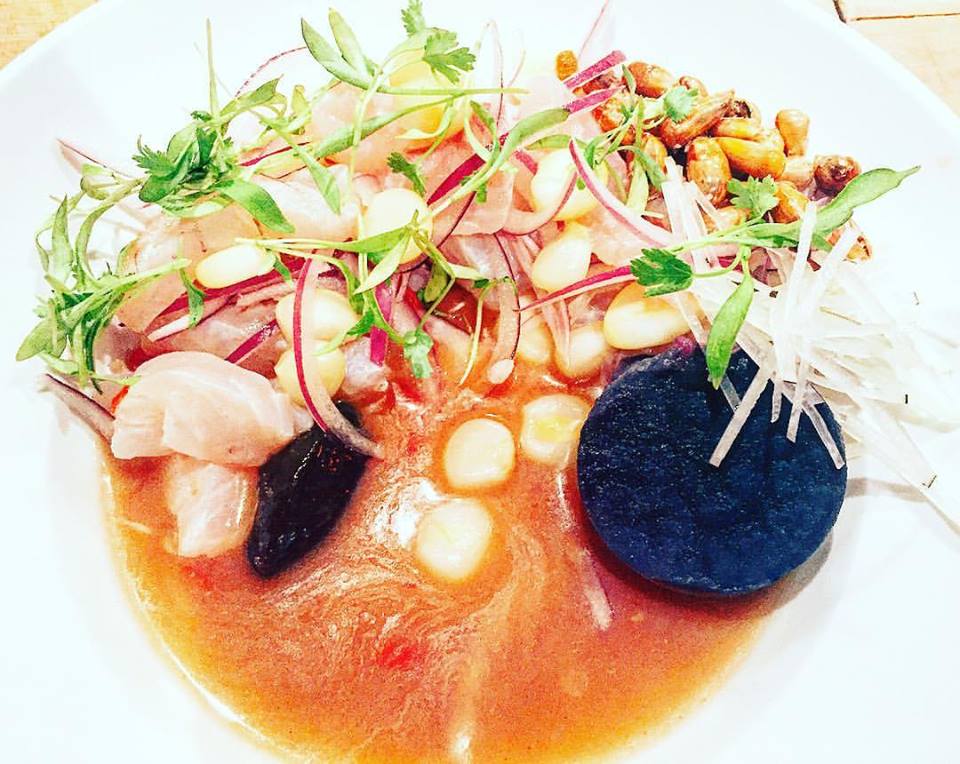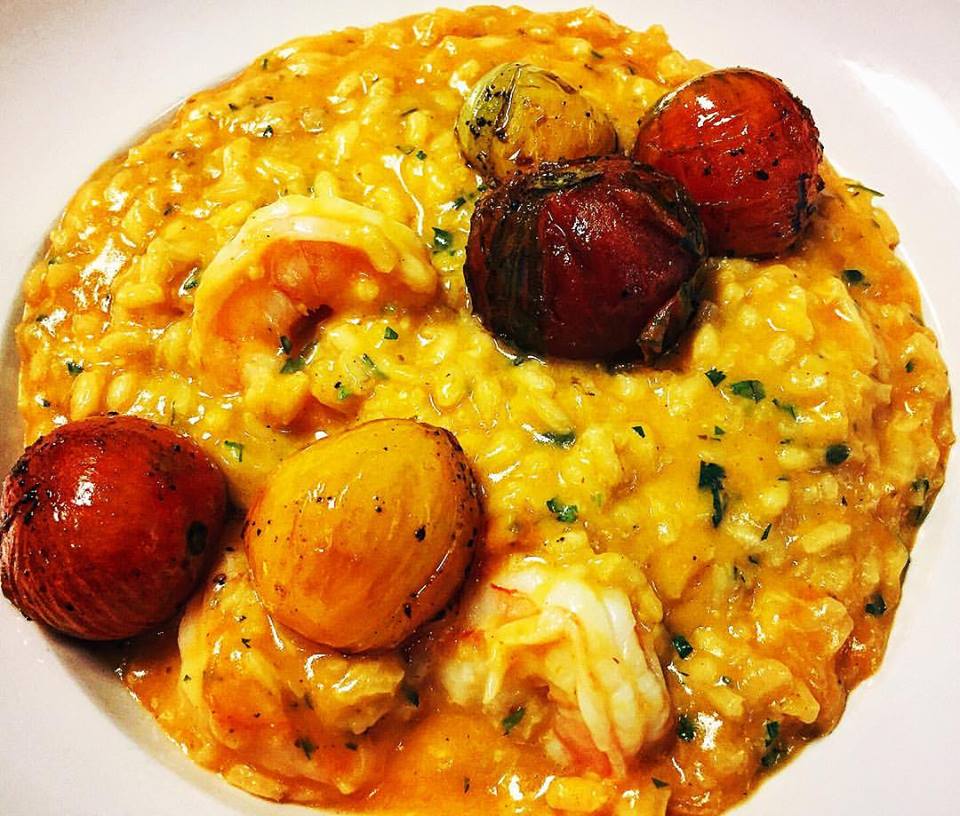[Published on online culture magazine, Mezze Weekly]
When Chef Julio-Cesar Flórez set out to introduce Peruvian cuisine to Austin’s already popular food scene a few years ago, he had a couple things in his favor besides tremendous talent. First, he would become the city’s first Peruvian chef, and second, the capital of his native Peru and place of birth, Lima, was becoming not just the gastronomic capital of the America’s but known as the best food city in the world. It seemed to only be a matter of time before Peru’s cuisine, so rich in culinary history, would be ushered into Austin, the world’s live music capital.
Starting his professional career working in the banking industry, by 25 Chef Julio-Cesar felt something was missing in his pursuits. It wasn’t just his creative spirit, but a deep connection to his cultural background and family that stirred a desire to become a chef. “Food and cooking was a big part of my life and what made me who I am today,” he shared. “I remember that my grandma, whose from Cajamarca, cooked delicious food when we went and visited her, or traveling around Salaverry, outside the town of Trujillo where my dad is from. We’d also travel around Lima and the coast of Peru to eat different things. He’s been my biggest influence. It was [experiencing] the food of the people of Peru, and even though it had been in front of me all my life, I had just fallen in love with it.” The people of Cajamarca are known for their dairy and cheese-making craft, and Trujillo is Peru’s third largest city and where cebiche (ceviche) is first thought to have originated.

You’d need a history lesson to understand the rich complexity of Peru’s gastronomy—from indigenous Incan and Creole cuisine, to Spain’s colonial rule beginning in the fifteenth century, to even ingredients from the Italians. Peru embraces all of it; most especially, its Asian influences from the Chinese and Japanese who settled in the country during the 1800s and eventually married their own recipes with Peruvian ingredients. The result: Peru’s popular Chifa and Nikkei styles. It’s pinpoints like these of Peru’s intertwined cuisine that are alone telling of its deeply rooted history, and just one of the reasons why Austin could no longer miss a taste for it.
It was through working behind the scenes and as a cook and then chef at restaurants for several years that Chef Julio-Cesar became trained in the ways of the professional kitchen—including those that carried their influences into Peruvian food culture. From his time as executive chef of La Sombra Bar & Grill, a Latin-American restaurant where he first introduced Peruvian flavors and preparation, to downtown Austin’s Spanish tapas bar Malaga where he served as executive chef, followed by shaking up the menu at Austin’s Caribbean-inspired Isla to offer Peru’s popular and innovative dishes as chef de cuisine.
These days, you’ll find Chef Julio-Cesar’s menu still featured at Llama’s, a popular Peruvian food trailer downtown, and he now serves as Sous Chef and runs the kitchen at Lucky Robot, a Japanese restaurant and sushi bar, a food culture that has undeniably influenced the craft of Peruvian Nikkei.

When he crafted the menu at Isla, for example, he featured dishes and flavors that he grew up with as a kid, or that he experienced on trips back to Peru. “I am from Lima, so you would find a lot of more modern touches to some dishes; some Spanish, Japanese, and Chinese influences. My parents come from the northern city of Trujillo where the food is simpler but extremely delicious,” he explained. Chef’s cebiche, ceviche as it’s commonly known to Americans, for example, is prepared like it would be in his parent’s hometown, using longer cuts of the fish rather than cubed, and it isn’t made with a ton of cilantro as you might typically find in other regions or cultures.
In fact, on one of his recent trips to Peru going as an experienced chef, he found himself examining the food differently than from traveling back the first time, he said. Peruvian cuisine, he has found, is not only delicious because of its people’s cooking skills, but because the daily ingredients they use are of such high quality. He explained, “I noticed that things like rice taste more like rice there—the sweet potato tastes more like sweet potato in that its sweeter and earthier. Onions, limes, herbs, all taste more like themselves. Fruits and vegetables are picked ripe at their peak, so they taste amazing, and because Lima and Trujillo are coastal cities, you find the seafood is extremely fresh and high in quality.”

In whatever capacity he serves, Chef Julio-Cesar seems to carry the spirit of Peruvian cuisine with him in his own quest for quality. For example, while at Isla he would always search for that better ingredient, so that this important part of his culture was reflected on the plates he shared with his customers. The kitchen would stretch boundaries by taking a modern approach to cooking, but also always respected the tradition behind the food.
“When you ate something at Isla, whether it was a traditional dish or a modern interpretation of a dish or preparation, we wanted you to think, ‘This tastes like Peru,’” he told me. You could also feel Peru at Isla, where he said many times customers would comment to him that the décor and music playing made them feel like they were in an old district of Peru called Barranco, known for its Bohemian culture and lifestyle.

During Chef Julio-Cesar’s many visits to Peru, he’s traveled through the entire coast and even crossed its neighboring borders into Ecuador and Chile. While it would be obvious to say his favorite thing to do is eat while traveling, it’s actually watching how people live and go about their lives that tops his list. “You can see the culture and the heart of a community that way, and then you taste it in their food,” he said.

It’s this kind of warm, dedicated and inclusive way of life in Peru, that Chef Julio-Cesar likes to carry within him in every role as chef. Like Peru has seen the wondrous ways that other cultures have enhanced its own regional cultures, it’s become a signature of Chef Julio-Cesar to merge local Austin ingredients and flavors into his cooking while keeping the spirit of Peruvian cuisine. Having lived in Austin for over 17 years, it’s a trait that he feels not only shows respect for the city’s local tastes, but like Peru’s now world-renown food scene would make Austin’s even richer.





